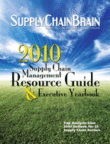
Visit Our Sponsors |
|
|
|
|
|
|
|
|
|
|
|
|
|
|
|
|
|
|
|
|
|
|
|
|
|
|
|
|
|
|
|
|
|
|
|
|
|
|

Brand-oriented value chains (BOVC), typically process manufacturing, are those companies that deliver branded consumer products, and where the essential cadence of the manufacturing operation and supply chain is driven by highly variable demand across a large number of SKUs. The complexity of SKU management, innovation churn, demand uncertainty and low switching costs puts a premium on visibility and responsiveness.
In terms of the competitive environment, BOVC manufacturers face a number of growing challenges:
• Growing regulatory complexity, both in terms of governmental legislation and consumer visibility, leading to greater frequency of product recalls and negative brand image.
• Proliferating retailer requirements, not just product attributes/sizes, but also in delivery requirements and frequency, exacerbated by the "globalization of demand."
• Accelerating pace of innovation, both in terms of SKU churn and to fight off the growth of retailer-branded private label.
• Although not yet to the pace of high-tech, BOVC manufacturers are seeing shorter product lifecycles, and the need to get to full production volume more quickly.
These challenges exist in the context of ever-increasing rates of manufacturing outsourcing, in many cases to overseas suppliers, along with the inevitable globalization of demand.
In many ways, PLM adoption is a journey. Companies start out by recognizing that they have a problem in a part of their business, undertake a level of process redesign and implement a point tool to solve the problem.
More recently, BOVC companies have begun to realize that things like the innovation process are not a series of disconnected processes, that they are connected (crossing organizations, local and global sites, and partners) and must be coordinated to manage and optimize the product pipeline and product throughput -- while also lowering costs, maintaining quality, compliance and traceability.
The Outlook
We are forecasting that PLM application spending growth in process manufacturing companies over the next few years will outperform the remaining manufacturing segments by almost 2 percentage points.
RELATED CONTENT
RELATED VIDEOS
Timely, incisive articles delivered directly to your inbox.

